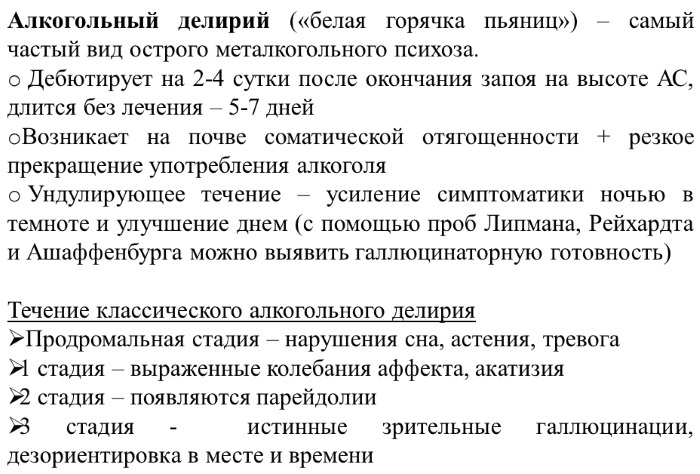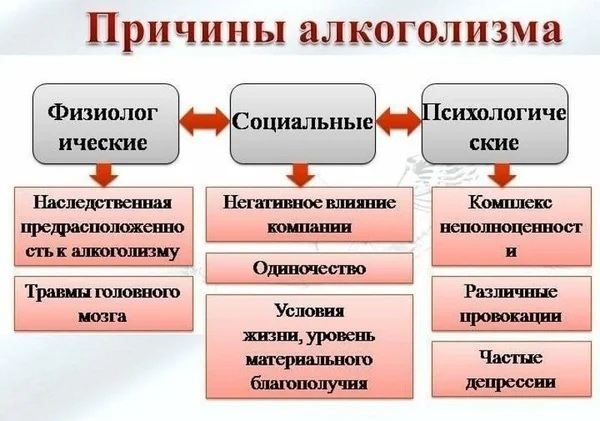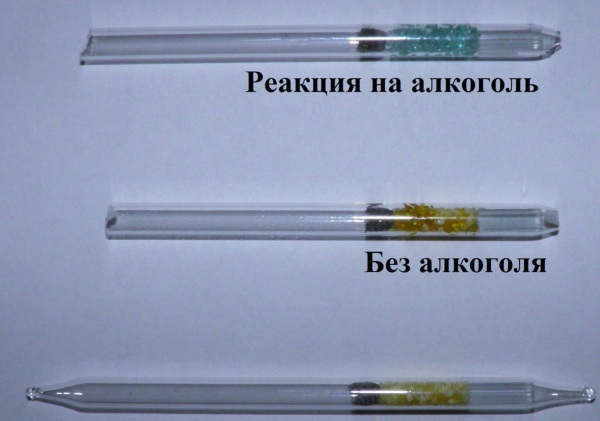Alcoholism is a type of drug addiction, which refers to chronic diseases affecting the central nervous system and brain activity. This leads to dysfunction in physical, mental, emotional, social manifestations. To date, there are 1, 2 and 3 stages of alcoholism, which are determined by the symptoms of the disease.
Record content:
- 1 Disease types
- 2 Stages and degrees
- 3 Symptoms
- 4 Reasons for the appearance
- 5 Diagnostics
- 6 When to see a doctor
- 7 Prophylaxis
-
8 Treatment methods
- 8.1 Medications
- 8.2 Traditional methods
- 8.3 Other methods
- 9 Possible complications
- 10 Video about alcoholism
Disease types
Alcoholism is a type of alcohol use disorder, a condition in which a person cannot control, obsessive, or continue to use alcohol, even if it causes problems with health. Alcohol consumption is classified as a disease by the WHO (AUD).
1 AUD is a chronic relapsing disease that is diagnosed based on individual compliance certain criteria set out in the Diagnostic and Statistical Manual of Mental Disorders (DSM-5).
Alcoholism at various stages of the disease can represent a specific clinical picture. Symptoms of the disease are already present at stages 1, 2 and 3 of the disease.
German researcher Alvin Jelinek identified the following types of addiction:
- Alpha addiction - manifests itself as a desire to get away from negativity with the help of alcohol. It plays the role of an antidepressant that helps lift mood and relieve tension.
- Beta addiction takes longer to form. A person can give up alcohol. Otherwise, when the temptation is too great, he consumes a significant amount of alcohol, and at the same time is unable to determine his rate. There are also violations in the field of psychosomatics. A person is not able to perform mental work, experiencing depression and irritation.
- Gamma dependence combines physical and psychological helplessness. A person is unable to refuse alcohol, and withdrawal syndrome causes a tolerant attitude towards the reasons for refusal. It can do without alcohol for a long time, but when it gets on the tongue, the boundaries of consciousness cease to be absent.
- Delta addiction lasts throughout the day. This stage differs from others in that it occurs during the withdrawal syndrome. Physically, a person experiences symptoms of gamma addiction, but over time, mental health worsens. As a result, instead of healing, the body requires maintaining the required blood alcohol level.
- Epsilon addiction - the degree when a person can no longer do without alcohol. Withdrawal symptoms appear more often, and breaks are also possible. But with new consumption, binges can last for several months.
Stage 1 alcoholism, the symptoms of which are noticeable from the first weeks, can be cured provided that the form of addiction is not diagnosed as drunkenness.
According to the classification of risks, the following forms are distinguished:
| Stages of alcoholization | Addiction stage / form of alcoholism |
| 1st stage of alcoholization - consumption of 1 dose, which includes 25 g of vodka or 250-350 g of wine / beer |
|
| Subacute intoxication | A condition that is complicated by pathological disorders in the work of organs of all systems:
|
| Complicated form of intoxication | The body experiences dysphoric or depressive disorders combined with drowsiness and hysterical fits. |
| Addiction syndrome (A-addiction) | Alcohol is consumed deliberately to solve sociological problems. Obvious somatic disorders appear, but the body is not able to refuse them, believing that they are good for it. At the same time, tolerance (increasing the dose) to alcohol develops, and withdrawal symptoms (hangover) appear. |
In some cases, withdrawal syndromes may occur at different stages of the development of the disease.
They are also divided into several stages:
-
Delirium - a severe form, which is noted in patients with alcoholism with 5 years of experience. Withdrawal syndrome occurs on days 3-8.

- Hallucinosis - appears after prolonged "binges", accompanied by hallucinations. On the 2nd day, there is clarity of consciousness, because of which the patient can take audible sounds and voices for the fact of persecution. Hence, excitement and psychomotor affects arise. At this point, he is considered socially dangerous.
- Paranoid - the state of cancellation, when a person defends himself from the social environment. In order to protect against auditory hallucinations, he can attack people. The duration of the condition can range from a few hours to 3-4 weeks.
With the onset of paranoia, a person is obsessed with aggression and delusional state. Such symptoms are identified with mental disorders, which is why alcoholism is partly called a disease that affects the central nervous system.
Stages and degrees
Stage 2 alcoholism, the symptoms of which can already be distinguished from banal intoxication, are not so pronounced. The thing is that there is an intermediate level between grades 1 and 3 - during this period, addiction or alienation from alcohol occurs.
In comparison with the rest, the following manifestations can be noted:
- First stage (1-4 years) characterized by positive memories. It is difficult for a person to refuse, he can always drink any dose in one gulp. Later, there is aggression, impulsivity, physical relaxation.
- Second stage (5-15 years) characterized by false binges, when it seems to a person that he has become addicted, or he really wants it in the subconscious. Unwittingly, he drinks a high dose, after which mild amnesia sets in. At this stage, physical dependence is formed. Withdrawal syndrome increases the fear of alcohol, which also allows you to give up drinking.
-
Third stage (5-10 years) begins with personal degradation. Symptoms such as immorality, weakness, euphoria appear.

Stage 3 alcoholism - symptoms appear sharply, performance decreases, and drinking is allowed with people of different levels and status. At this point, you can give up the habit - tolerance decreases, fears and anxieties increase. Feelings of guilt increase, the addicted person becomes vulnerable and subject to criticism.
Symptoms
Alcoholism is considered a self-diagnosed disease. In WHO, it has an ICD-10 classification with code F07.0. The condition refers to psychological disorders - personal degradation.
When diagnosing at least 2 symptoms from the list, we can talk about the onset of the disease:
- decreased performance;
- emotional "swing";
- satisfaction of needs in any way;
- disregard for the norms of behavior in society;
- mild paranoia;
- concern about a topic;
- change in the rate of speech and consciousness;
- change in sexual libido.

For alpha, beta and gamma addictions, these symptoms are the norm. They can appear at stages 1 and 2 of the disease, as well as accompany a new relapse after withdrawal syndrome.
Stage 3 alcoholism, the symptoms of which are pronounced, is accompanied by conditions such as:
- psychopathological anxiety;
- uncertain risk;
- pessimism;
- asthenia;
- hypertension;
- tremor of the limbs.
Similar symptoms are typical for delta and epsilon addictions, but they appear in different degrees of severity. Since each type of alcoholism has separate degrees of development, the clinical picture looks different.
Reasons for the appearance
There are no compelling reasons for the main first 3 types of alcohol dependence - alcoholism begins either with interest or with an independent choice (example of parents, bad company). More often adolescents fall under the influence of the social circle, but it is easier for them to get out of the situation by returning to a normal lifestyle.
Those who have not gone through 2-3 stages can also suffer from severe forms. Due to life circumstances, a person can do without alcohol physically, but psychologically he wants to use the tool as help (alpha, beta addiction). The reasons may be difficulties in the family - material and social situation.
A typical history can be supplemented with neurological symptoms that indicate psychological dependence. In men, it manifests itself in the form of memory lapses, seizures.
The reasons can be not only personality disorders, but also health problems - myopathy, esophagitis, gastritis, hepatitis. Diseases are not compatible with alcohol, as a result of which consequences may occur in the form of primary symptoms of intoxication.
In advanced cases, when the stage of the disease reaches the last "marks", complications occur - the result of "activation" of the reasons that preceded them. The patient may have health problems, alcohol is contraindicated for him.
An excess dose of the drink can lead to malfunctions - macrocytosis, cirrhosis of the liver. Such diseases require constant monitoring and long-term treatment. Otherwise, symptoms of endocrine diseases, cardiovascular lesions and Wernicke-Korsakoff syndrome appear.
Important! Female alcoholism is much easier to recognize, since there are only 2 types - hereditary and acquired:
- In the first case, it is worth talking about maintaining the body's working capacity. Female hereditary alcoholism is not cured.
- In the second case, you can resort to inpatient treatment. The plus is that, according to statistics, there are fewer relapses among women.
Male alcoholism cannot be cured with a course in a few weeks. Women adapt, the body, due to physiological functions, can independently overcome apathy. In men, blood cells are not restored, as in women, the functions of the reproductive system.
If a man is fertile, he can produce healthy offspring. A woman, even after the end of the course of treatment, can give birth to an unhealthy child due to damaged cells of the organs of the reproductive system. Over time, they only age, become affected and wear out. With alcoholism, there is a risk - the affected egg can become an embryo and a future fetus.
If a boy is born, the risk of inheriting alcoholism is lower. A girl can inherit the disease from both parents.
Diagnostics
The clinical manifestations of alcoholism begin with behavioral responses. Disturbance of attention and psychomotor changes can occur even with a blood alcohol content of 4-7 mmol / L. Withdrawal symptoms are characterized by tremors, stupor, and ataxia.
To determine the criterion of intoxication, Mokhov-Shinkarenko tubes are used, which determine the alcohol content in the exhaled air vapor.
Rapid tests and laboratory tests can also be used:
| Stages | Diagnostic methods | Method essence | Price, rub.) |
| Initial | Chronic use markers (CDT) | Checking for:
|
1600 |
| 2 and 3 | Fermentopathy method | Indicators are identified:
|
200 each test |
| 1 and 2 | Gamma Glutamyl Transferase Method | The content of alkaline phosphatase, lipoproteins, alpha-hydroxybutyrate dehydrogenase is taken into account. | 550 per marker |
| 1-2-3 | Method of radionuclide hepatography and scanography | When using labeled Bengali pink "| 131" it is possible to establish the absorption and excretory functions of the liver. | 560 |
| 1-3 | Diagnosis of organ dysfunctions | The following studies are being carried out:
|
500 to 3450 service |
Clinical-diagnostic and chemical-toxicological studies can be carried out in a narcological dispensary or its subdivision, and biochemical studies - in a narcology center.
When to see a doctor
If, when observing a person in a state of alcoholic intoxication, symptoms of stages 1-2 appear, it is worth contacting a narcologist to establish a diagnosis. The initial appeal will allow you to establish whether there is an addiction, how to treat it, by what methods.
Based on the diagnostic results, you can choose outpatient or inpatient treatment. In cases where the stage of alcoholism has reached 3-4, it is recommended to contact the help service for addicts who are in the period of the acute form of the disease.
Prophylaxis
Prevention methods are appropriate for patients who suffered from alcohol dependence and those who fear for their health:
- visiting a psychologist-narcologist as part of an outpatient and inpatient course;
- carrying out propaganda against alcohol;

- social models of rehabilitation;
- short term detoxification;
- outpatient counseling;
- course "alcoholics anonymous".
These methods are performed both before and after addiction treatment.
Treatment methods
Treatment for alcohol addiction is possible with the simultaneous work of a psychologist and a narcologist. This helps to prevent relapses in 76% of cases, impending breakdowns.
All patients go through several stages in the recovery process:
- Detoxification - the process (3-5 days) of elimination of toxins from the body and removal of withdrawal symptoms.
- Rehabilitation - the recovery period lasts 6-12 months. With good dynamics, post-rehabilitation support comes - the prevention of breakdowns when a person returns to a normal habitat.
- Psychotherapeutic the procedure allows you to create new habits, distract from the awareness of the need for alcohol.
- DPDG - rational behavioral therapy involves the use of play forms to distract attention.
- Coding - a procedure to instill a ban on alcohol. It can be used both in the 1st and in the last stages of the disease.
- Hypnosis is not a mandatory procedure, but can be used as part of outpatient treatment.
-
Medication procedures (injections) enable the patient to feel a real reaction of deterioration after alcohol consumption, but without obtaining the desired effect (euphoria, relaxation).

- Implantation - a capsule or tablet is implanted under the skin. They trigger the reaction of vomiting and nausea when drinking alcohol.
There are also various injections and solutions that can be used on the advice of a doctor on an individual basis.
Medications
The following drugs are prescribed as drug treatment:
- Benzodiazepines - the main medicines that help to cope with withdrawal symptoms. It is used at a dose of 10 mg every 4 hours or 25-90 mg / 4 times a day.
- Tranquilizers have a sedative effect, help to cope with seizures. With the development of psychosis, 1-5 mg / day of antipsychotics are prescribed. Together with him, you need to take thiamine at a dose of 200-400 mg per day and folic acid at 2-4 mg / day.
- Sensitizing agents are needed for a chemical "barrier" that helps block feelings of anxiety, excitement and aggression. Teturam is prescribed 24 hours after the last alcohol intake, the initial dose is 100 mg, after which it is increased to 250-5 mg / day.
- Opioid receptor blockers such as naltrexone help block dopamine levels that make you want to drink. The drug should be taken for 12 weeks at 50 mg every day.
- Acamprosate or acetylhomotaurine help to activate glutamate receptors. They are needed for the treatment of intoxication in chronic alcoholism. Tablets contain 333 g, are prescribed in a daily dose of 2 g with a weight of more than 60 kg.
-
Serotonergic agents in the brain help to "strengthen" the connection with alcohol, causing a constant urge to drink. Over time, their amount is not enough for drinking alcohol, and the body begins to flush out damaged cells. To restore them, inhibitors are needed - zoloft, fluoxetine, fevarin. The class of drugs is intended for the treatment of depression and chronic mental illness. Appointed individually for a course of up to 10-12 weeks.

After stopping treatment, the patient must undergo a course of psychotherapy in order to get used to a new lifestyle without medication.
Traditional methods
Unfortunately, folk recipes have not yet been invented that could help cure alcoholism, otherwise drug therapy would become irrelevant. Earlier, infusions of thyme herb were used to prevent binge drinking.
However, today, folk methods include those that can be carried out at home. As a rule, taking some medications can be attributed to self-medication methods in an outpatient clinic.
Other methods
Together with taking medications, psychotherapy is carried out.
The technique is selected for a group of patients:
- Rational psychotherapy is indicated for patients with trauma resulting from alcohol addiction.
- Directive therapy is aimed at restoring mental reflexes in people prone to infantilism and skepticism.
- Social therapy is needed for those who have difficulty communicating in society. As a rule, alcoholic patients often face rejection and non-acceptance of their personal beliefs.
- Mediated psychotherapy is needed by gullible and suggestible persons who cannot refuse alcohol due to the action of the "mass effect". They are helped to change the company, environment and communication style.
- Psychological therapy is the final one, capable of revealing the suggestive and autogenous abilities of the person.
Group lessons can also be conducted between different categories of persons who have been diagnosed with alcoholism of various forms and stages:
- affective counter-attribution;
- collective stress-emotional therapy;
- Dovzhenko coding;
- mass psychotherapy;
- therapy for creative self-expression;
- group lesson "alcoholics anonymous".

All these activities are aimed at treating and maintaining a person in a new life after giving up addiction.
Possible complications
The consequences of alcohol dependence are reflected not only on the environment, but also on the mental state of a person.
If conflicts in the family on the basis of the disease can be prevented, then health endangers from the following organs:
- Gastrointestinal tract - the process of swallowing is disrupted, gastritis appears, stagnation of feces is diagnosed. Also, pancreatic secretions are depleted, as a result of which a patient with alcoholism develops subacute pancreatitis.
- The liver cannot handle toxins. Despite the possibility of self-healing, alcohol eats away at the walls and cells - necrosis appears. After giving up alcohol, the reaction is already irreversible, the organ continues to die as a result of the development of cirrhosis and cancerous tumors.
- In the heart, the myocardium begins to work more slowly - this leads to cell degeneration. Vascular atherosclerosis and hypertension may develop. With prolonged alcohol consumption, the “alcoholic heart” syndrome is diagnosed. Its walls are denser, failure is caused by a disruption in the work of cells and muscle. With toxic damage, recovery is impossible.
- The immune system is also subject to irreversible effects. There are proteins in the blood that are unable to develop protection against infections. Often, the number of lymphocytes decreases, which leads to the formation and development of foci of chronic infection. It can be HIV, abscess, pneumonia.
- From the side of the central nervous system - neurological symptoms are observed. The cells of the nerve endings die, the pressure inside the skull increases. Stem cells do not regenerate, which leads to disability and accelerates the aging process.
According to statistics, among patients with alcoholism, life expectancy is reduced by 15-20 years. Death occurs due to diseases that are caused by alcoholism.
Alcoholism can be diagnosed in stages 1, 2, or 3. Addiction is treatable, which must be carried out in a stationary mode. Thanks to the symptoms noticed in time, it is possible to save the patient and prevent possible complications.
Article design: Vladimir the Great
Video about alcoholism
Alcoholism's point of no return:



